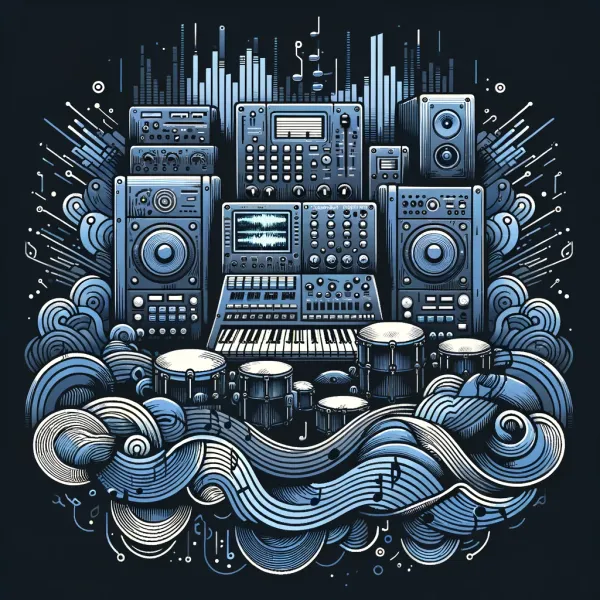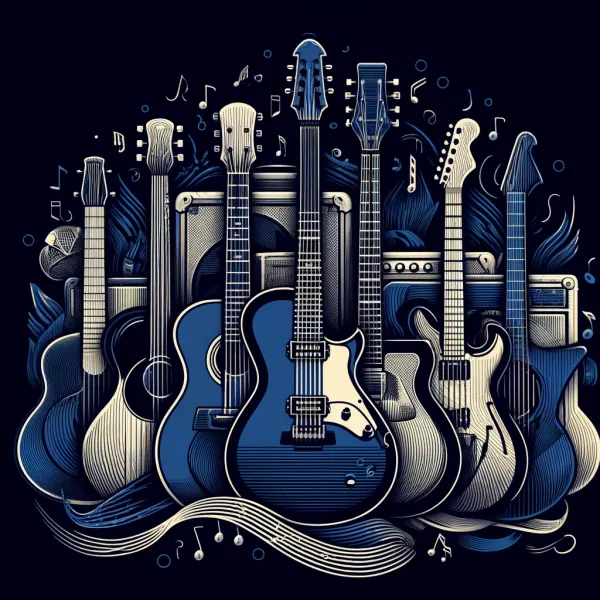Mastering Music Arrangement Techniques for the Modern Producer: Exploring Macro and Micro Approaches in Your DAW

As a music producer using a digital audio workstation (DAW) like Ableton Live, FL Studio, Logic Pro, Cubase, or Pro Tools, arranging music is a vital skill to develop. Arrangement involves organizing and structuring musical elements in your project to create a coherent and engaging final product. In this blog post, we'll dive into the world of music arrangement techniques, discussing macro and micro approaches, and exploring various song structures. By the end of this post, you'll have the knowledge and tools to confidently arrange any song within your DAW.
I. Macro Arrangement: The Big Picture in Your DAW
Macro arrangement refers to the overall structure of a song, including its various sections and the order in which they appear. A well-crafted macro arrangement ensures a song flows smoothly from start to finish, maintaining the listener's interest throughout.
A. Common Song Structures
Verse-Chorus-Verse-Chorus-Bridge-Chorus (ABABCB)
This classic pop and rock song structure features alternating verses and choruses, with a bridge section added to provide variation.
Examples include:
- "Clarity" by Zedd ft. Foxes
- "Don't You Worry Child" by Swedish House Mafia ft. John Martin
- "Titanium" by David Guetta ft. Sia
Intro-Verse-Chorus-Verse-Chorus-Outro (AABABA)
Similar to the previous structure, this format includes an intro and outro, which can help set the mood and provide a sense of closure.
Examples include:
- "Scary Monsters and Nice Sprites" by Skrillex
- "Strobe" by Deadmau5
- "Lean On" by Major Lazer & DJ Snake ft. MØ
AABA (also known as 32-bar song form)
This structure is prevalent in jazz and consists of two sections, A and B, with the A section repeated twice, followed by the B section, and a final A section.
Examples include:
- "Inspector Norse" by Todd Terje (The song features a variation of the AABA structure, with a more repetitive A section and a distinct B section)
- "Windowlicker" by Aphex Twin (This track has a unique structure but shares similarities with AABA, including a repeating main theme and contrasting sections).
B. Crafting Your Macro Arrangement in Your DAW
- Start by laying out the basic song structure in your DAW using markers or arrangement view to label each section (e.g., ABABCB).
- Experiment with different section lengths and orders by rearranging your clips or automation to find a structure that suits your song.
- Pay attention to the energy levels throughout the song. Use automation to adjust volume, filter frequencies, and other parameters to build towards climactic moments.
II. Micro Arrangement: Fine-tuning Your Sound in Your DAW
Micro arrangement focuses on the finer details of a song, such as individual instruments, melody lines, and harmonies. Effective micro arrangement can bring a song to life by adding depth, texture, and interest.
A. Layering Instruments
- Choose a core set of virtual instruments or audio samples to serve as the backbone of your arrangement.
- Add layers of additional instruments, such as harmonies or counter-melodies, by creating new MIDI or audio tracks to create depth and complexity.
- Consider using contrasting textures, such as soft pads against a powerful synth lead, to create tension and excitement. Contrast in both texture and volume are powerful ways to create memorable parts of the song to keep the listener interested.
B. Dynamics and Articulation
- Use automation and MIDI control to adjust the dynamics (volume) of your instruments, creating contrast and intensity in your arrangement.
- Experiment with different articulations by altering MIDI note velocities or using different articulation settings on virtual instruments to add character and expression.
C. Space and Balance
- Use EQ and panning to ensure that each instrument has its own space in the mix, avoiding frequency clashes and overcrowding.
- Balance the levels of each instrument using faders and gain staging to create a coherent and unified sound.
III. Song Sections: The Building Blocks of Your Arrangement
Now that we've covered macro and micro arrangement, let's take a closer look at some common song sections and their functions within your DAW.
A. Intro
The intro sets the tone for the song, drawing the listener in and establishing the musical theme. Consider using a unique combination of virtual instruments or audio samples to create a memorable introduction.
To set a musical theme:
- Use a melody, chord progression, or rhythmic pattern that sets the tone for the rest of the song.
- Start with a simple arrangement: Introduce one or two instruments, gradually building up the layers and complexity as the section progresses.
- Create a smooth transition: Design the intro to lead seamlessly into the verse or other subsequent sections.
B. Verse
The verse is the storytelling part of the song, usually featuring the main vocal melody and lyrics. Use the micro arrangement techniques discussed earlier to add interest and variation between verses by adjusting MIDI patterns, automation, and track processing.
To create your verse:
- Develop a story or message: Craft your lyrics or melodic content to convey the main narrative or emotion of the song.
- Introduce a chord progression: Create a harmonic structure that supports the melody and provides a foundation for the section.
- Add variation: Differentiate between multiple verses by subtly altering the arrangement, such as adding or removing instruments, or modifying the melody or rhythm.
C. Chorus
The chorus is the emotional and energetic peak of the song, typically featuring a catchy, memorable melody and the main lyrical hook. Focus on creating a powerful and engaging arrangement using automation and creative layering of instruments within your DAW to leave a lasting impression.
To create your chorus:
- Create a memorable hook: Design a catchy, memorable melody and lyrical phrase that will stick in the listener's mind.
- Increase the energy: Boost the energy level compared to the verse by adding more instruments, increasing dynamics, or using a more complex chord progression.
- Provide contrast: Ensure the chorus stands out from the verse by altering the melody, harmony, or rhythm.
D. Bridge
The bridge provides a departure from the verse and chorus sections, offering a chance for the listener to experience something new within the song. This is an opportunity to introduce new chord progressions, melodies, or instrumentation that contrasts with the other sections, keeping the listener engaged.
To create your Bridge:
- Introduce new elements: Add a new chord progression, melody, or instrumentation that contrasts with the verse and chorus.
- Build tension or release: Use the bridge to create a sense of anticipation or resolution before returning to the chorus or another section.
- Experiment with different lengths and structures: The bridge can be short and simple or long and elaborate, depending on the desired effect.
E. Drop
The drop, commonly found in electronic and dance music, is a section where the energy level reaches its peak, often following a buildup. In this section, the beat and bassline take center stage, driving the energy of the track. Be creative with your sound design and rhythmic elements within your DAW to create a captivating drop that gets people moving.
To create your drop:
- Design a strong build-up: Create a sense of anticipation by gradually increasing the energy, tension, and volume in the preceding section.
- Focus on rhythm and bass: The drop often emphasizes the beat and bassline, so ensure these elements are powerful and engaging.
- Use unique sounds and textures: Experiment with sound design and synthesis to create interesting and impactful sounds for the drop.
F. Outro
The outro serves as a conclusion to the song, often bringing the energy level down and providing a sense of closure. You can choose to end your song with a simple fade-out, a repeated musical motif, or a unique arrangement that leaves a lasting impression.
To create your outro:
- Gradually reduce energy: Start winding down the song by removing instruments, simplifying the arrangement, or lowering dynamics.
- Provide a sense of closure: Use a repeated motif or a final chord resolution to give the listener a feeling of completion.
- Consider a unique ending: Explore unconventional endings, such as a sudden stop, a change in tempo, or an unexpected chord progression.
IV. Tips for Successful Arrangement in Your DAW
- Analyze your favorite songs within your DAW by importing them as reference tracks. Examine their macro and micro arrangements, taking note of the techniques that resonate with you, and try to incorporate them into your own work.
- Experiment with different song structures and arrangements by rearranging clips and automation in your DAW until you find what works best for your individual style and the specific song you are working on.
- Be open to collaboration. Share your project files with other music producers to gain valuable feedback and new ideas.
- Keep the listener in mind. Consider the emotional journey you want to take them on and ensure that your arrangement choices support that vision.
- Practice, practice, practice. Like any skill, music arrangement takes time and dedication to master. The more you work on it within your DAW, the better you'll become.
Conclusion
Mastering music arrangement techniques within your DAW is essential for creating compelling and engaging songs. By understanding both macro and micro approaches to arrangement, as well as familiarizing yourself with common song structures and their functions, you'll be well-equipped to arrange any song with confidence.
Remember to experiment with different techniques, learn from your favorite songs, and always keep the listener in mind as you craft your arrangements. With dedication and practice, you'll be well on your way to becoming a skilled arranger in your DAW and taking your music to new heights.




